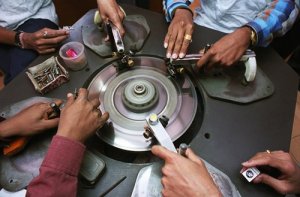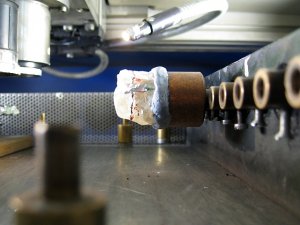Hi all,
Curious, why do we have humans hand cutting and polishing diamonds? Why subject such beautiful diamond roughs to the jitters of a humans touch when grinding down diamonds?
CNC technology using programming in computers to cut widgets have been around for a long time. Why can't this technology be applied to diamond cutting? Imagine programming in AGS Triple Zero and/or H&A ideal proportion parameters to yield one after another perfect diamonds.
I've ask this question to a few cutters and retailers and they say you need humans to adjust cuts to accommodate 'grains' or something like that.
Come on now...we have machines/robots that make everything from cars to coins and paper currency. Can you imagine needing a human to hand stencil dollar bills for you and hand make every car? The end product would probably be so costly with so much labor involved. Perhaps the cost of diamonds would drop drastically with automation. Is it for this reason why the cutters don't want to answer my question with a straight face for fear of obsolecense?
One day I'd like to buy my lady a diamond necklace with several H&A linked diamonds at a smidgen of what it would cost today.
What are your thoughts everyone?
Curious, why do we have humans hand cutting and polishing diamonds? Why subject such beautiful diamond roughs to the jitters of a humans touch when grinding down diamonds?
CNC technology using programming in computers to cut widgets have been around for a long time. Why can't this technology be applied to diamond cutting? Imagine programming in AGS Triple Zero and/or H&A ideal proportion parameters to yield one after another perfect diamonds.
I've ask this question to a few cutters and retailers and they say you need humans to adjust cuts to accommodate 'grains' or something like that.
Come on now...we have machines/robots that make everything from cars to coins and paper currency. Can you imagine needing a human to hand stencil dollar bills for you and hand make every car? The end product would probably be so costly with so much labor involved. Perhaps the cost of diamonds would drop drastically with automation. Is it for this reason why the cutters don't want to answer my question with a straight face for fear of obsolecense?
One day I'd like to buy my lady a diamond necklace with several H&A linked diamonds at a smidgen of what it would cost today.
What are your thoughts everyone?







300x240.png)